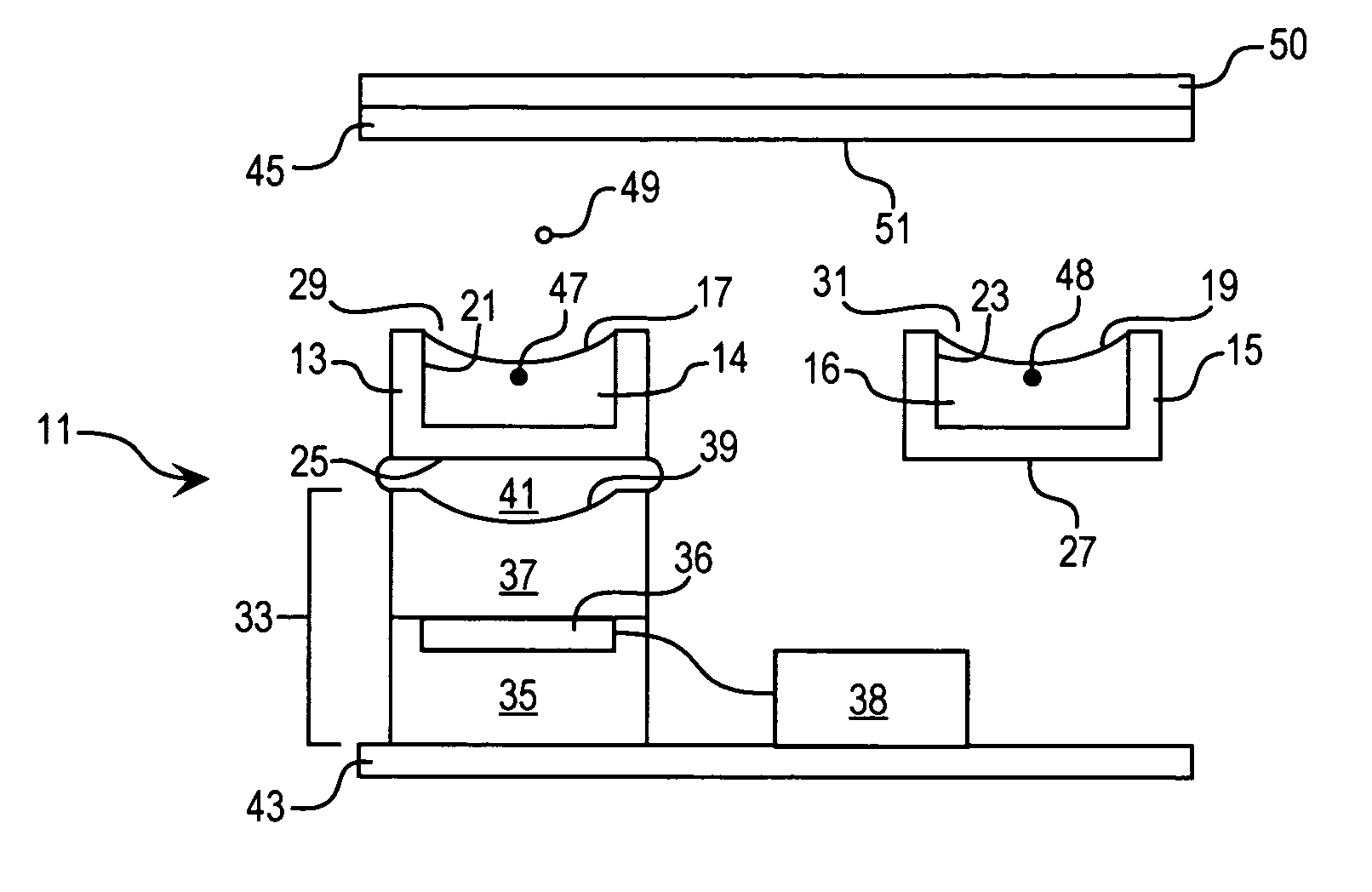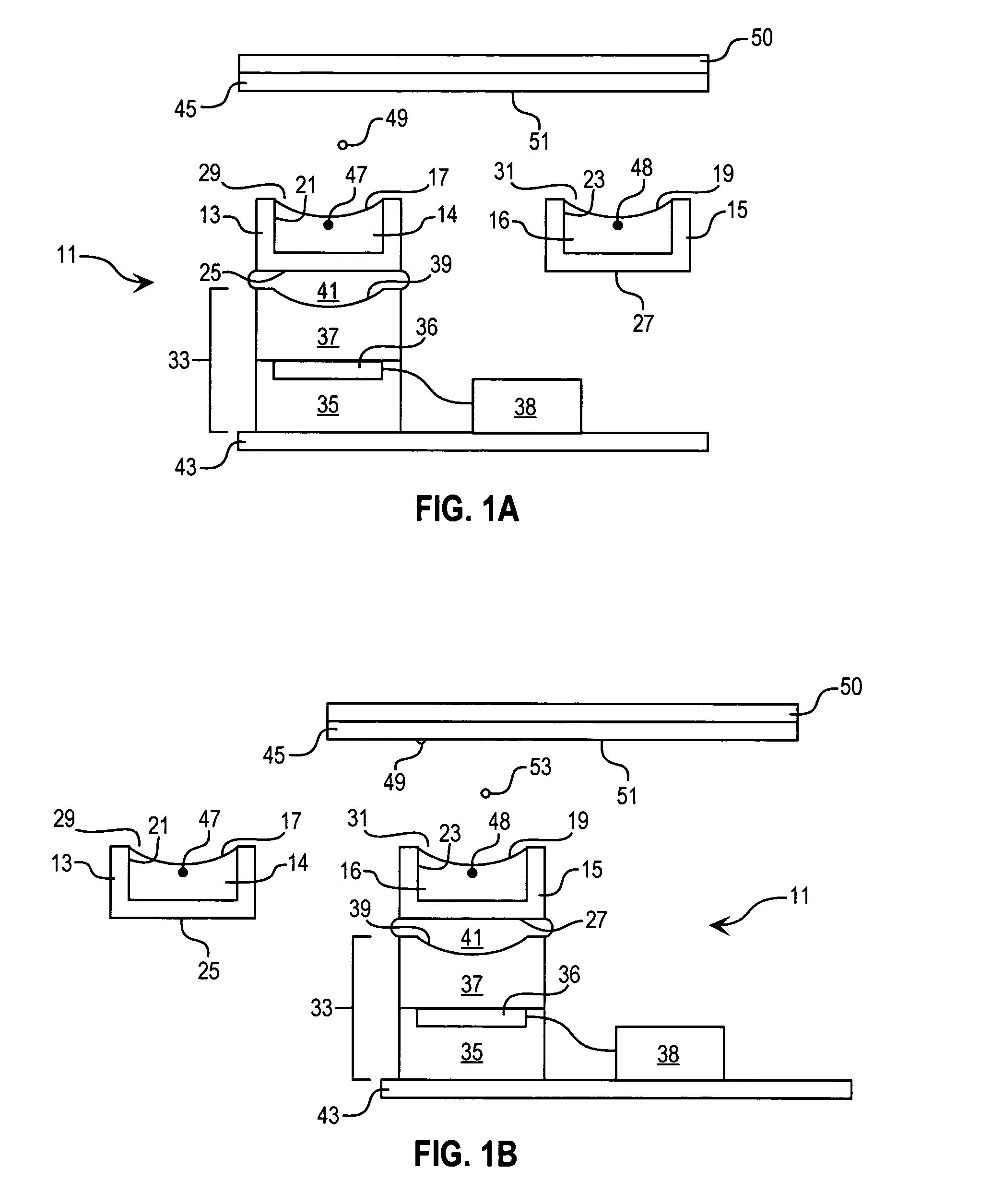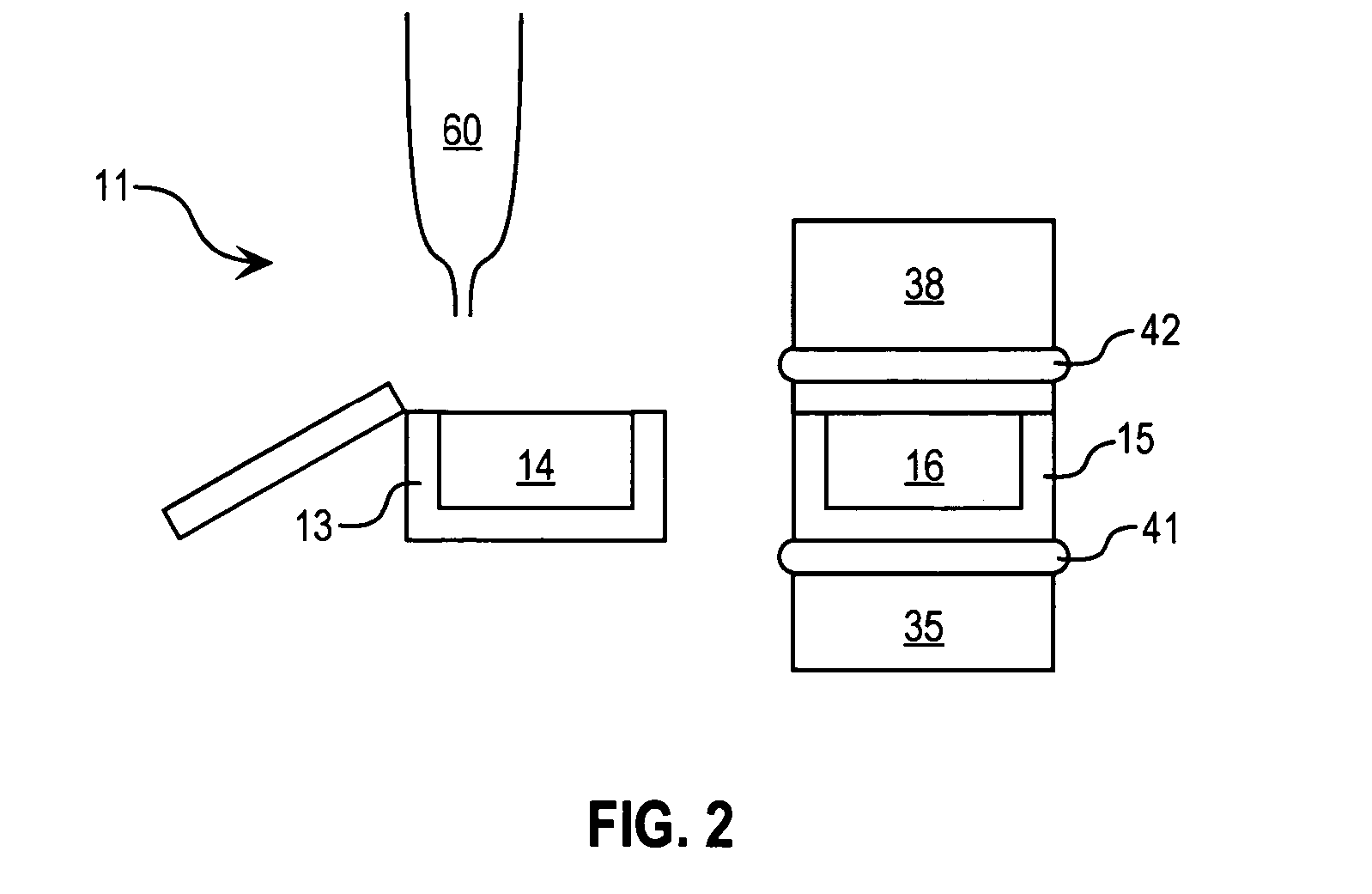Acoustic determination of properties of reservoirs and of fluids contained therein
a technology of reservoirs and properties, applied in the field of acoustic energy, can solve the problems of affecting the inability to integrate the process and the quality of the resulting product, and the inability to synthesize the compound. all starting compounds employed for the batch synthesis would be wasted,
- Summary
- Abstract
- Description
- Claims
- Application Information
AI Technical Summary
Benefits of technology
Problems solved by technology
Method used
Image
Examples
Embodiment Construction
[0040]Before describing the present invention in detail, it is to be understood that this invention is not limited to specific fluids, biomolecules, or device structures, as such may vary. It is also to be understood that the terminology used herein is for the purpose of describing particular embodiments only, and is not intended to be limiting.
[0041]It must be noted that, as used in this specification and the appended claims, the singular forms “a,”“an,” and “the” include plural referents unless the context clearly dictates otherwise. Thus, for example, reference to “a reservoir” includes a plurality of reservoirs, reference to “a fluid” includes a plurality of fluids, reference to “a biomolecule” includes a combination of biomolecules, and the like.
[0042]In describing and claiming the present invention, the following terminology will be used in accordance with the definitions set forth below.
[0043]When a first object is stated to be “acoustically coupled to” or “in an acoustic cou...
PUM
| Property | Measurement | Unit |
|---|---|---|
| temperature | aaaaa | aaaaa |
| temperature | aaaaa | aaaaa |
| temperature TRT | aaaaa | aaaaa |
Abstract
Description
Claims
Application Information
 Login to View More
Login to View More - R&D
- Intellectual Property
- Life Sciences
- Materials
- Tech Scout
- Unparalleled Data Quality
- Higher Quality Content
- 60% Fewer Hallucinations
Browse by: Latest US Patents, China's latest patents, Technical Efficacy Thesaurus, Application Domain, Technology Topic, Popular Technical Reports.
© 2025 PatSnap. All rights reserved.Legal|Privacy policy|Modern Slavery Act Transparency Statement|Sitemap|About US| Contact US: help@patsnap.com



